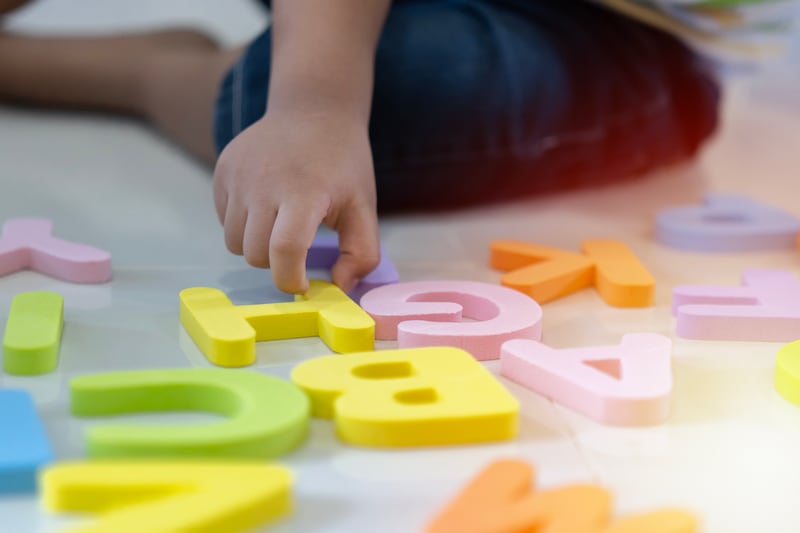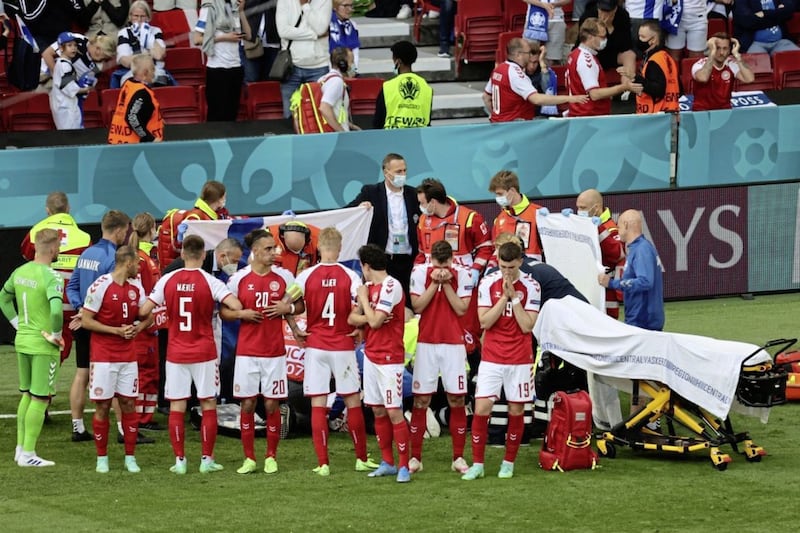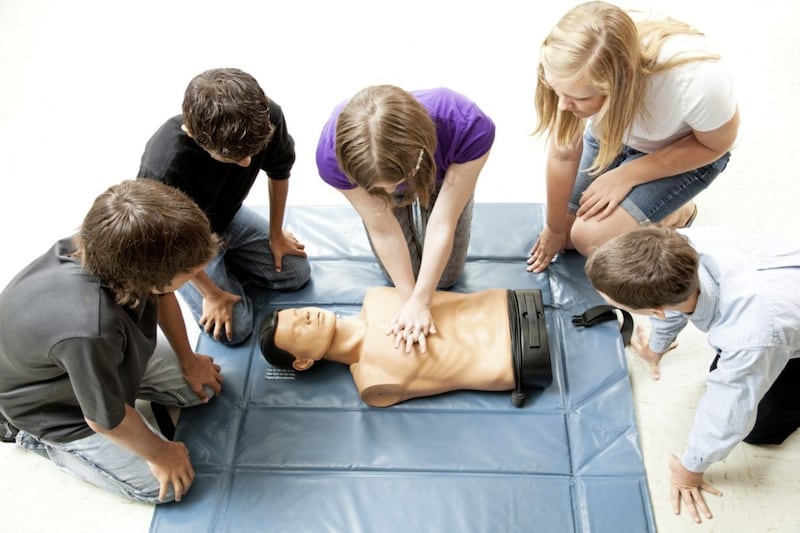THE injuries Connor Osborne suffered after coming off his BMX bike were, according to his mother, "like something from a horror movie".
Connor, then 13, and his brother, Jack Smith, then 14, had been enjoying the first day of their school summer holidays speeding down a hill on their bikes when Connor hit a stone and went flying into the air. As Connor landed, the impact pushed the left handlebar into his side.
Connor tried to get to his feet, but his legs buckled. "I saw blood was pouring from just below my stomach on my left side," he says. "It was all over the front of my T-shirt and I called out to Jack that I was bleeding before collapsing on to the ground.’
The force of the impact had severed his femoral vein – one of the body’s main veins located in the upper thigh and pelvic region. There was a risk he could bleed to death.
But, rather than panicking, Jack calmly took action. Just weeks earlier, both boys had been trained in emergency first aid.
Were it not for that, the outcome could have been very different. Their story vividly highlights what a difference even basic first aid skills can make.
"When Connor fell on to the floor after standing up, I thought he was messing about," recalls Jack, now 15.
"But then I saw that he was covered in blood and I ran to help. I felt scared as I had never seen so much blood and Connor was frightened, but I knew it was important to stay calm and recall my training.’
Jack ripped off his T-shirt and pressed it against the wound to apply pressure and stem the bleeding. With his other hand he dialled 999 on his mobile phone and asked for an ambulance.
"I told them that my brother had impaled himself on his bike handlebars," he says. "Connor kept saying: 'I want to go to sleep', but I’d been taught how important it was to keep a patient conscious so they could tell you if they started to feel worse, so I kept him talking.’
Jack also called his mother, Emma (36), who arrived at the scene just before the paramedics.
"The wound was jagged and like something from a horror movie," she recalls. "Blood was pouring and you could see tissue hanging out. I was so shocked I couldn’t even speak, but Jack was so in control I instinctively trusted him to carry on doing the right thing.’
Shockingly, despite being in a crowded park in Leeds that day, only one other person, a girl, came forward to help. "That really surprised me," says Emma. "But I honestly don’t know if I’d have been able to respond myself. It’s a scary situation to be in – but for a kid it’s even more terrifying.’
Connor underwent life-saving surgery.
"The doctors said Jack had saved his brother’s life. It makes me go cold thinking about how differently it could have ended," says Emma.
While Connor is now considering a career in medicine as a result of his brother’s actions, earlier this month Jack was presented with a St John Ambulance Young Hero Award for his quick response.
Dr Thomas says similar accidents happened every day "and so many times the outcome is not positive because, unlike this young man, people are scared to come forward and do something".
Research conducted by the British Red Cross found that just 5 per cent of adults had the skills and confidence to provide emergency first aid.
First aid lessons will be compulsory in state schools in Britain from September 2020; children will start learning the basics from age five.
"By the time they leave primary school, they will know how to treat a basic head injury and make a 999 call – telling the call handler what the problem is and where they are," says Dr Thomas.
"By the time they leave secondary school, they will have been taught additional skills, including how to do CPR if someone has a cardiac arrest, and how to use a defibrillator.’
Dr Thomas adds: "We need to keep teaching out in the community – reminding each other how to do this – until first aid and CPR become part of your muscle memory, and your instinct is not to run in the opposite direction but to go straight to that person to see what you can do to help.
"It is nearly always better to do something than nothing," she adds. "The more you use your first aid, the more the fear factor disappears."
She says some people hold back, worrying they will get into trouble if they do something wrong.
"In fact, legally, that’s not the position. If you are helping someone, and doing everything you can, you are fine."
She adds that "even being able to give a coherent message to the emergency call handler is going to make a difference. Doing nothing will not help a person survive."
:: For information about first aid courses see sja.org.uk
© Solo dmg media








